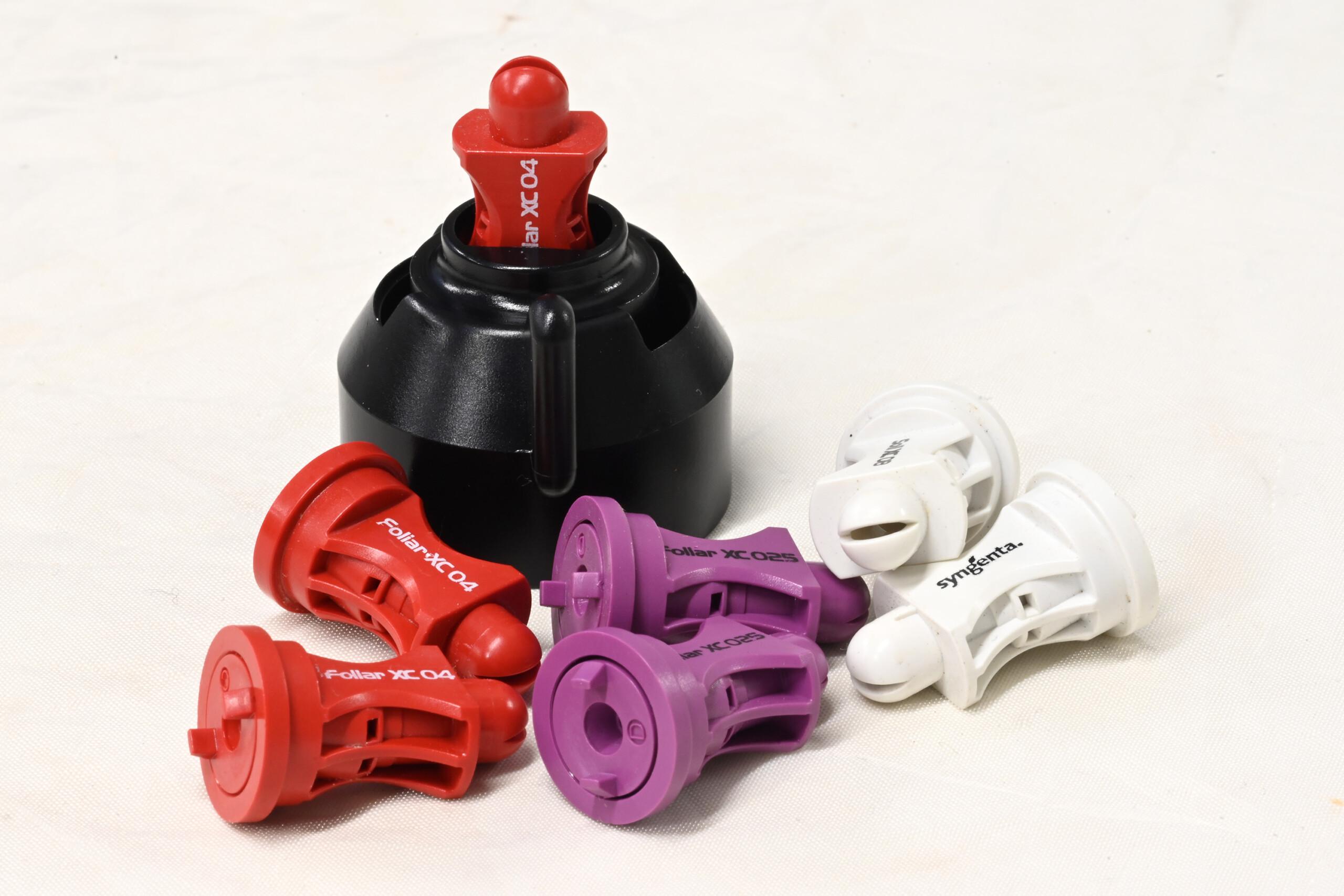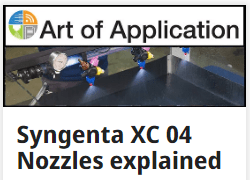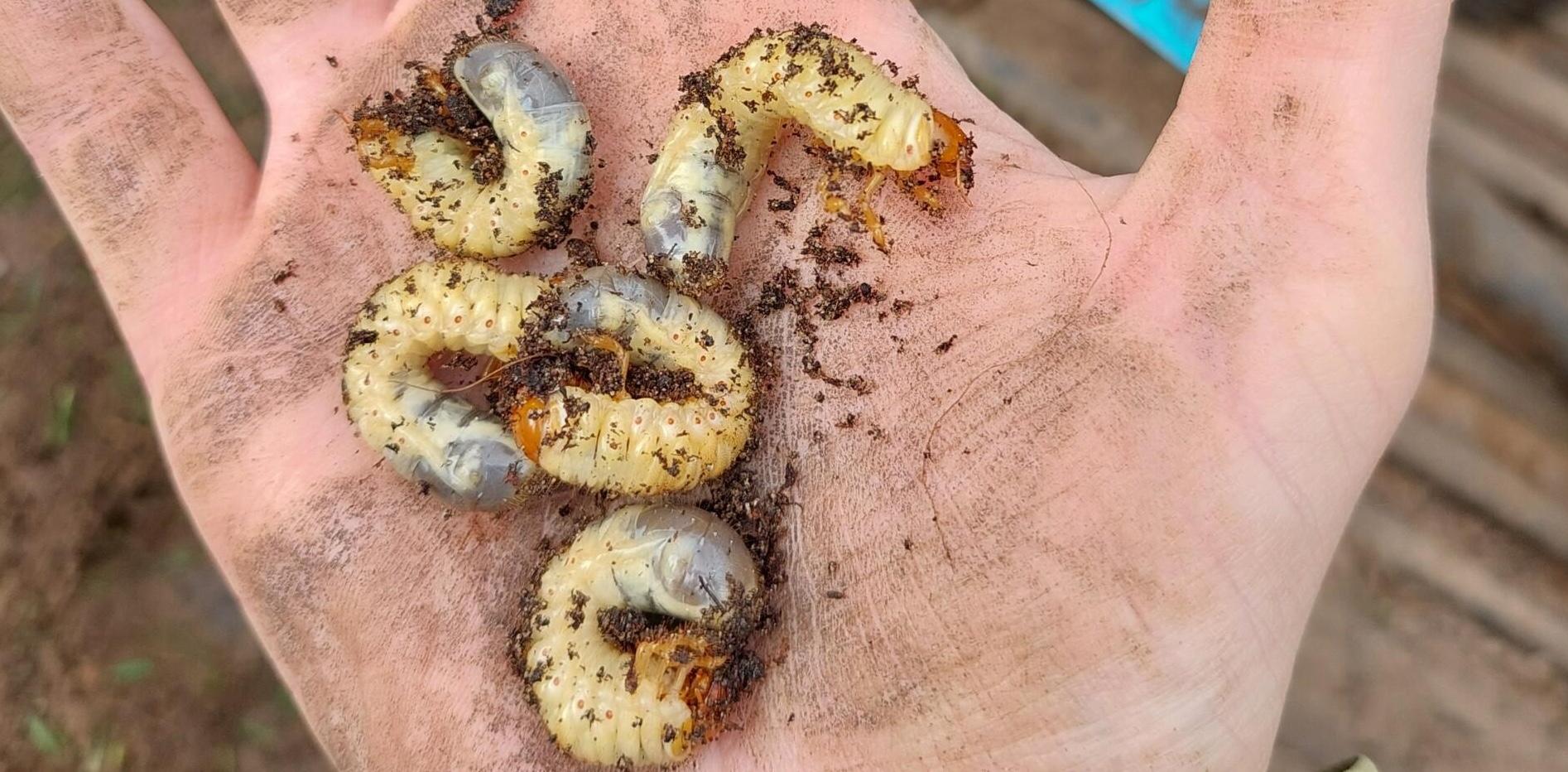Any inputs we use to help protect or improve surface quality should be planned and executed in order to get the best out of them.
When we preform high quality sprays in the right conditions we see better product performance, that could mean better levels of control or longer lasting disease suppression.
For sprays of iron and foliar feeds it can be visually very apparent if a spray hasn’t gone to plan, or if the sprayer wasn’t set up right, you’ll be looking at stripes.
Its less obvious with applications of fungicides, until disease pressure ramps up, so for any application is important to check the sprayer is set up and calibrated before use.
Nozzle selection is a big part of the story, and a very cost effective way to get more out of every one of your applications.

There is a whole section of the Syngenta Turf website dedicated to improving spray application, including nozzle selection, so it’s well worth checking out. Art of application.
Mowing
Obviously an important part of maintaining sports turf, but not idea for keeping as much active ingredient as we can from our fungicide on the leaf.
As we cut and take away clippings on greens we can be removing a portion of the active from the target site.
Where possible mow prior to application and delay mowing after application to give the maximum feasible amount of time for the active to be taken up.
Ideally skip a cut the next day, consider rolling instead.
Water
Our products are designed to perform well in varied conditions, including rapid rain fastness.
Even with proven rain fastness of a product, it’s best not to apply fungicides directly before, during or after rain as some active may be lost as run off.
- Before – Rain or heavy dew before a spray application makes it much more likely for a product to run off the leaf. It’s the equivalent of spraying at a much higher water rate.
As the droplets of our spray meet those already on the leaf they join together and are much more likely to tumble off the leaf.
Where possible apply to a dry leaf surface, especially if you want the active to remain on the leaf.

- Rain during or directly after may wash active off the leaf before its had chance to be taken up (systemic products) or dry on (contact products).
The more active ingredient we keep on/in the plant to better our disease defense and control outcomes are.
Contact Fungicides
Coverage is king. Making sure we have good coverage is very important as areas which are not sprayed are not protected.
Contact fungicides can’t move in the plant so we need to get good coverage. For products which act on the outside of the leaf, like Medallion TL (Fludioxonil), we aim to target them at the colder periods of the year.
This is not because they don’t work at warmer times, the disease control is still very good.
The issue is as they are on the outside of the leaf, and when growth potential is high (warmer temperatures) we are cutting frequently and removing the treated parts of the plant.
So we get more value out of Medallion in the winter, as it doesn’t get removed as quickly when the plant is growing slowly.

Systemic Fungicides
Products that are taken up by the turf grass and move around, some will move only a short distance and other can be very mobile.
We tend to recommend applying this kind of fungicide when we have growth. Growth means things are moving in the plant so we can also get the fungicide active absorbed and moving to where it’s needed.
The graph above shows GDD per day for a year, and gives a rough idea of where some of our fungicides sit. Each year will be different and so conditions rather than dates are best to look at.
The more GDD the more growth is assumed on that day if all other things are equal (adequate moisture, nutrition etc available)
There are many factors to consider to help get the best out of fungicides as we move into autumn, but time invested in making sure the application is a success will get the most out of the applications you do make.





